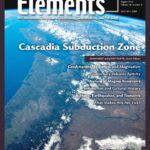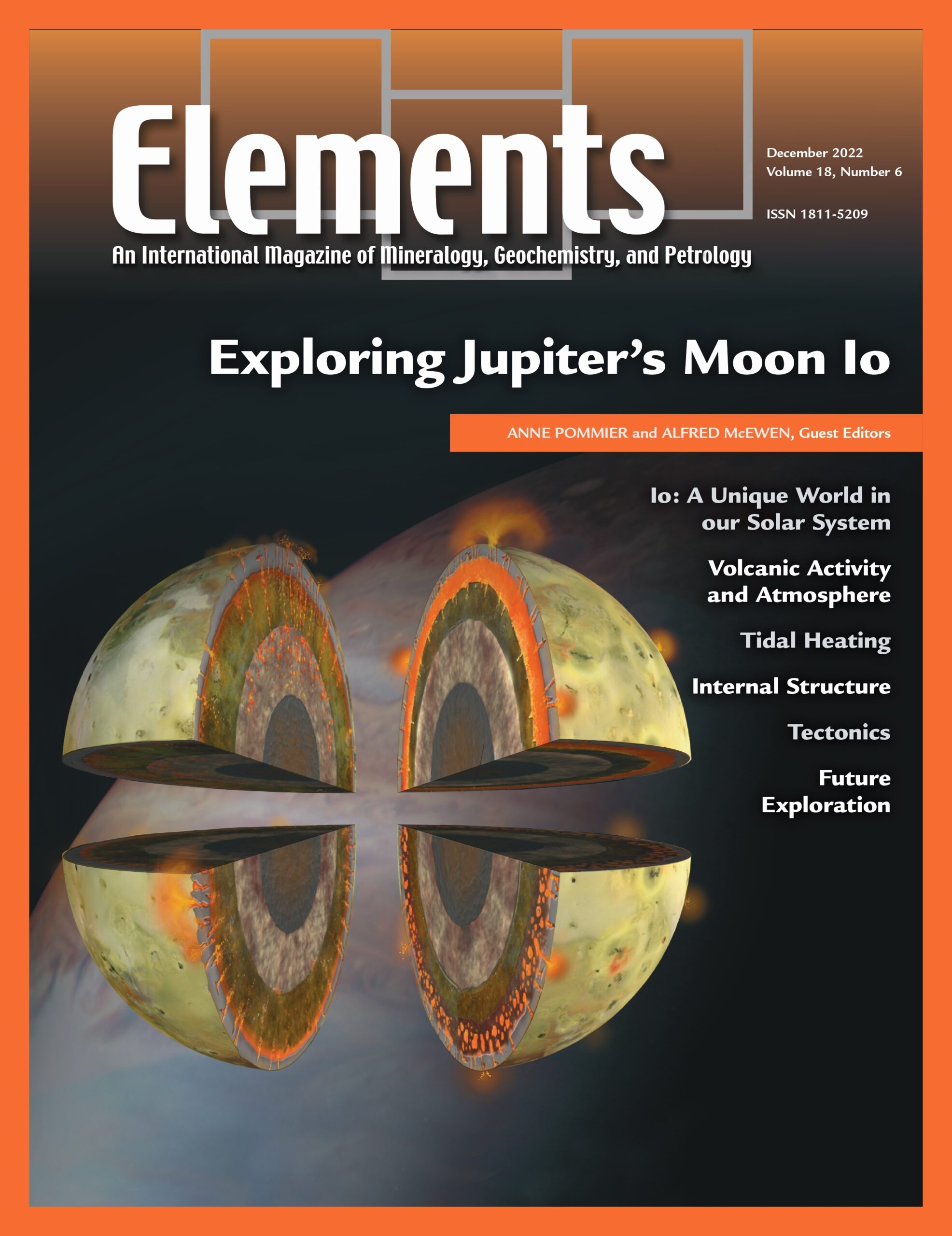
Cascadia Subduction Zone, August 2022, Vol. 18, No. 4
June 28, 2024
Biomagnetism, August 2023, Vol. 19, No. 4
June 28, 2024Exploring Jupiter’s Moon Io, December 2022, Vol. 18, No. 6
$20.00
Jupiter’s moon Io is the best place to understand a fundamental planetary process that shaped terrestrial planets, icy ocean worlds, and extrasolar planets: tidal heating. Io is the most tidally heated world in our Solar System and may contain a magma ocean.
Exploring Jupiter’s Moon Io
December 2022, Vol. 18, No. 6
Jupiter’s moon Io is the best place to understand a fundamental planetary process that shaped terrestrial planets, icy ocean worlds, and extrasolar planets: tidal heating. Io is the most tidally heated world in our Solar System and may contain a magma ocean. Io’s spectacular volcanic plumes sustain the atmosphere and feed the giant magnetosphere of the Jovian system. The lavas covering its surface reflect heat-pipe tectonics, which is analogous to the volcanically hyperactive youth of all rocky planets. Io is the ideal planet-scale laboratory to study the intertwined processes of tidal forcing, extreme volcanism, and atmosphere–magnetosphere interactions. This issue of Elements reviews our knowledge of Io, emphasizing on its composition, interior dynamics, and surface processes, while also sharing perspectives for future missions.
Why You’ll Love Elements Magazine:
- Expert Contributors: Articles written by renowned researchers in the field of geoscience.
- Engaging Content: Join a community of readers who are passionate about Elements.
- Exceptional Quality: Each issue is printed on high-quality paper with stunning visuals and detailed illustrations that bring complex scientific concepts to life.
Order your copy of the December 2022 issue of Elements magazine today and delve into exploring Jupiter’s moon Io.
Related products
-
Fluids in Planetary Systems, January 2005, Vol. 1, No. 1
$20.00Water and other geofluids play an important role in the geochemical and rheological evolution of the Earth and other bodies in the solar system. These fluids are responsible for the formation of hydrothermal mineral deposits, affect eruption behavior in volcanic systems and the geophysical properties of the mantle, and significantly affect the way in which rocks deform and fracture.
-
Water On Mars, June 2006, Vol. 2, No. 3
$20.00During the past several decades, spacecraft data have transformed the planets from astronomical objects into geologic worlds. Mars is the current focus of planetary exploration, and NASA’s objectives for this effort are based on the theme, “follow the water.
-
The Nuclear Fuel Cycle – Environmental Aspects, December 2006, Vol. 2, No. 6
$20.00Increasing concerns for the effects of global warming that result from rising greenhouse gas concentrations in the atmosphere have led to a reexamination, even enthusiasm, for nuclear power. Of all the current alternatives to fossil fuels, nuclear fission is the most important source of energy, accounting for 17 percent of the world’s electricity.




